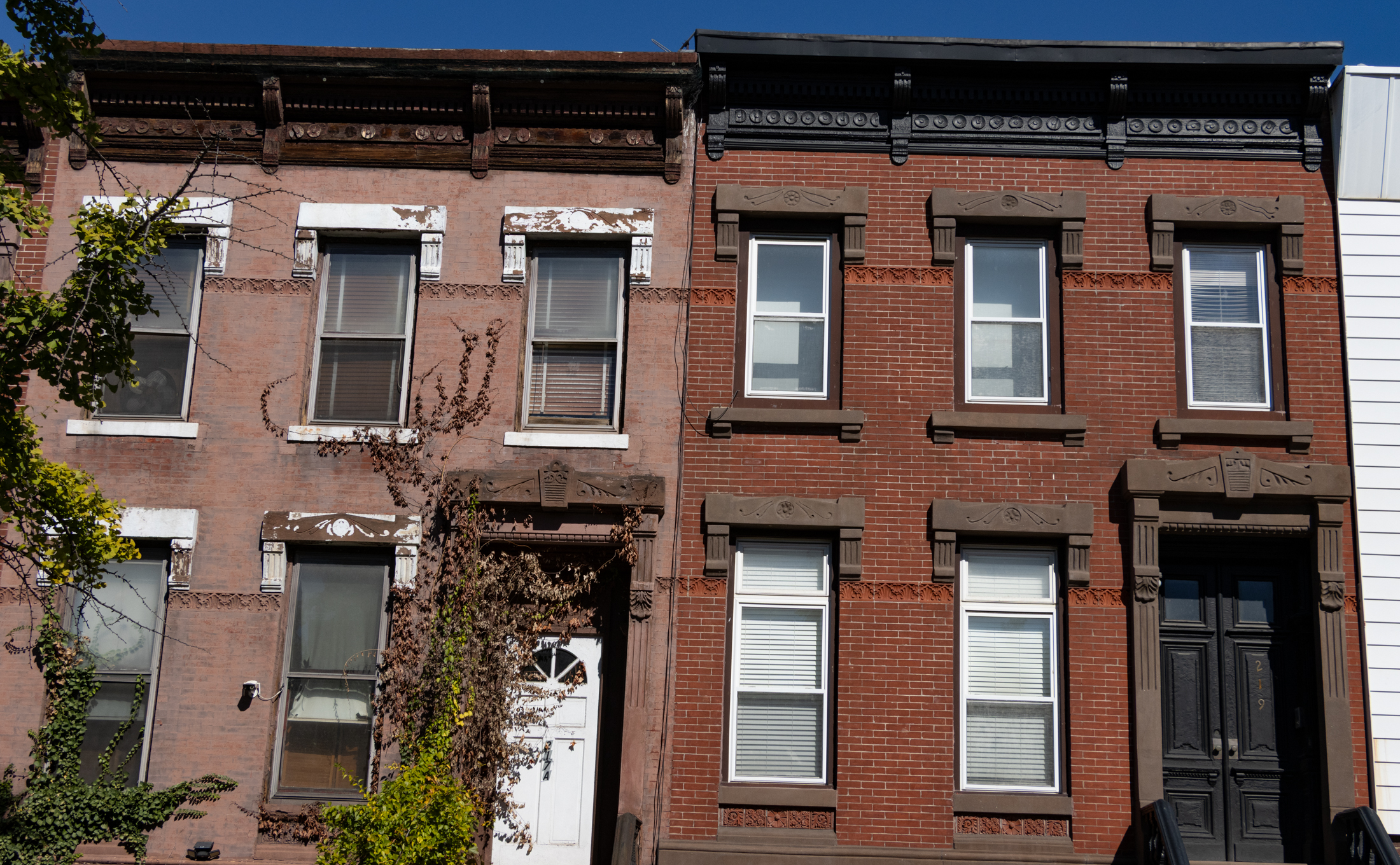Monday Links
Pasen ustedes. Photo by Malabarista Lunar. The Curious World of the Last Stop [NY Times] Accessible Homes Not So Accessible [NY Times] Brooklyn Bagel Store Drops Prices [NY Daily News] Six Hurt in Navy Yard Inferno [NY Post] Swing Design Into Brooklyn [NY Daily News] Green Bike Lane for Clinton Street [Brooklyn Eagle] Six B’klyn…


Pasen ustedes. Photo by Malabarista Lunar.
The Curious World of the Last Stop [NY Times]
Accessible Homes Not So Accessible [NY Times]
Brooklyn Bagel Store Drops Prices [NY Daily News]
Six Hurt in Navy Yard Inferno [NY Post]
Swing Design Into Brooklyn [NY Daily News]
Green Bike Lane for Clinton Street [Brooklyn Eagle]
Six B’klyn Developments Selected for Condo Showcase [Brooklyn Eagle]
Brooklyn Children’s Museum Gets LEED Silver [ID]





Hmm, answer yesterday did not post.
Thanks for the thoughtful responses to a difficult issue, I suspect yours is a voice in the wilderness. Most of the time I read about hard-liners whose requirements and attitudes would force a minimal improvement at maximum disruption, but I’m sure I exaggerate also.
Research on new technologies would be preferable. The Segway technology has led to stair climbing wheelchairs, for example, which could be heavily subsided by our govt. at a fraction of the cost of much ADA policing. But instead of looking for new ways to solve the problem, we throw money at the lowest-common-denominator-ization of the environment.
But then, the issue is so fraught with landmines, I mean, how do you argue against “accessibility” even if there’s merit in the argument?
Without going into what it is, I do have a physical disability- it doesn’t affect my mobility but it does greatly impact the way I live. What bothers me so much about this problem is that at some level there is the assumption that by accommodating the needs of the disabled (as legislated now) we enable the disabled to lead “normal” lives. As one who lives with it everyday, I know this is not the reality. Nor do I think accomodating the needs of one group at the expense of the larger population, is healthy for anyone. Some of the rules and regulations are too onerous and unfair. And it takes serious civil rights issues down the path of using litigation to resolve issues. More money for lawyers, not for the disabled.
As you pointed out, cmu, many of the solutions we’ve come up with don’t work. Not only does the kneeling bus, with the attendant extra time changing the seats and adjusting the straps for a wheelchair, force other passengers to be inconvenienced, it can’t be fun for a disabled person to be the center of hostile attention from pissed off passengers.
There has to be a better means of coping than solutions that pit the needs of the disabled against society as a whole by forced compliance to a set of standards that cause difficulty and inconvenience for everyone else. As a society we have to remain compassionate and willing to make life as good as possible for those who need extra help, but in the present situation we’ll most likely be spending far more money on lawsuits than we’ll spend on good solutions.
As you say. devil’s in the details. I would say that buildings should be subject to different standards based on size and maybe even on typology–it’s obviously easier to design accessibility into a large apartment building or a ranch-style house than a new brownstone.
And we need to get away from the concept that everyone is alike and their needs are equally valid. If you’re disabled, you’re different. Just as if I had a condition that makes me unable to stand the cold and therefore I couldn’t live in NY, maybe we should consider that a dense, older, urban place like NYC is just going to be less accessible…as what makes this place attractive and aesthetically pleasing is often the antithesis of accessible design.
And consider simpler solutions…the kneeling bus, for example, a complex, expensive, breakdown prone, slow disaster. How much easier would it have been if we built a concrete sidewalk ramp so wheelchairs could roll on a standard bus? And it would be a boon to older people as well.
Finally, back to the NYT article; it’s so misleading, not the least because the apartment shown is clearly not accessible in any way…range instead of cook top, no sink cutout, etc.
Actually I don’t think I disagree with you on the rigidity of their position. Or on the things being done to accommodate them . Some things are so minor I don’t see why they aren’t standard, but others are so difficult that it makes it hard for everyone else.
So what do you think would be a viable compromise, cmu? And I think retrofitting thousands of apartments to comply with the federal standards is not only unrealistic, but I don’t think will really resolve the problem. what we do need is a solution that allows us to be sensitive to the needs of the disabled while remaining fair to everyone else.
Ah, perhaps something to disagree about, bxgrl. While it’s laudable to have disabled standards for everything from houses to parks, I must say the rigidity with which disabled advocates prevent or force change, abetted by the ADA rules, is not in the best interests of the community.
Ramps are good; forcing them to deface the facade of an 18th century building is bad. Preventing the placement of public toilets for decades because they didn’t exactly match ADA standards (NYC, San Francisco) is poor policy. Having to design outdoor spaces, including parks, as dully as possible because we should allow for the disabled, is ridiculous.
And as for townhouses without stoops…what can I say? Why, for example, is the under-stoop entrance (if at grade,) not considered adequate?
Finally, note the cleverly-posed NY Time picture with the lady in the wheelchair contorted to load the d/w. If she had entered the kitchen backwards, there’d be no issue.
I’ll be interested in seeing what developers do about their housing for the disabled. Most seem to have ignored the federal guidelines and having two different sets of regulations, City and federal seems like a waste. I think the article makes it clear the city requirements are not adequate but somehow I don’t see that developers and management companies will actually do a mass reconstruction to comply.